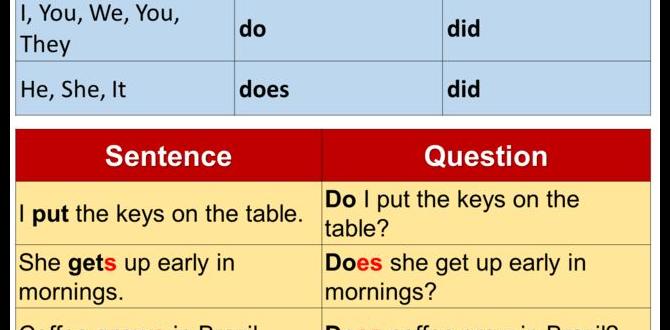Quick Summary: Fix slow nail gun firing by cleaning debris from the magazine and nose, ensuring proper air pressure, lubricating moving parts, and checking the driver blade and spring. A well-maintained nail gun fires nails quickly and reliably. This guide walks you through simple, effective steps to get your nailer back in action.
Hey there, DIY enthusiasts and woodworkers! Jack Shaffer here from Nailerguy. If you’ve ever been in the middle of a framing project or a fine woodworking build, only to have your nail gun start sputtering, firing nails slower than a Sunday stroll, you know how frustrating that can be. It’s like your trusty tool suddenly decided to take a nap just when you need it most. This common issue crops up for all sorts of reasons, and thankfully, most of them are pretty easy to fix yourself. No need to call in the repair shop just yet! We’re going to walk through some simple, proven solutions together. By the end of this guide, you’ll be able to diagnose the slowdown and get your nail gun firing with its usual punch and speed. Let’s dive in and get your projects back on track!
Table of Contents
Why is My Nail Gun Firing Slowly?
It’s a question many of us have asked ourselves, especially when a project is on a tight schedule. A slow-firing nail gun isn’t just annoying; it can halt your progress and make your work look less professional. There are several common culprits behind this performance dip, ranging from simple maintenance oversights to minor mechanical issues. Understanding these potential causes is the first step to a speedy recovery for your tool.
Think of your nail gun like any other hardworking tool – it needs a little TLC to perform its best. Over time, dust, debris, and old lubricant can build up, gumming up the works. Insufficient air power is another biggie, especially for pneumatic nailers. And sometimes, a part might simply be out of place or worn down a bit. We’ll explore each of these in detail to help you pinpoint the exact reason your nailer is dragging its feet.
Troubleshooting Common Slow-Firing Issues
Let’s get our hands a little dirty and figure out what’s going on. Most of the time, a slow-firing nail gun can be brought back to life with some basic maintenance and troubleshooting. We’ll go from the simplest fixes to slightly more involved ones, so you can tackle this systematically.
1. Check Your Air Supply (For Pneumatic Nailers)
This is often the biggest culprit for pneumatic nail guns. If your nailer isn’t getting enough air, it simply won’t have the power to drive nails with speed and force. It’s like trying to blow up a balloon with a tiny puff of air – it just won’t inflate properly!
- Air Pressure: Every nailer has an optimal operating pressure, usually listed in its user manual. For framing nailers, this is often between 70-120 PSI. For finish nailers, it’s typically lower, around 80-100 PSI. Too low, and the gun will be sluggish. Too high, and you risk damaging the tool.
- Hose Diameter and Length: Using a hose that’s too narrow or too long can restrict airflow. A general rule of thumb is to use at least a 3/8-inch diameter hose for most air-powered nail guns, and keep the length to 50 feet or less whenever possible.
- Air Compressor Capability: Ensure your air compressor is adequate for the nail gun you’re using. Nail guns, especially framing nailers, can consume a lot of air. If your compressor can’t keep up with the demand, the pressure will drop, leading to slow firing. Look at the CFM (Cubic Feet per Minute) rating of both your compressor and your nailer. Make sure your compressor’s CFM output (at the required PSI) is higher than or equal to the nailer’s consumption.
- Couplers and Fittings: Leaky or clogged air couplers and fittings can also reduce airflow. Inspect them for damage and ensure they’re making a good, tight seal.
The Occupational Safety and Health Administration (OSHA) emphasizes proper air pressure and hose management for pneumatic tools to ensure safety and efficiency. Don’t overlook these fundamentals!
2. Clean the Magazine and Nose Assembly
The magazine is where your nails are stored, and the nose assembly is where the magic happens – where the nail is driven. Any obstruction or buildup here can impede the smooth movement needed for rapid firing.
- Debris Buildup: Over time, sawdust, wood chips, and even small pieces of metal from nail collation can accumulate in the magazine track and the nose area. This acts like grit in a delicate mechanism.
- Magazine Feed Latch: Make sure the magazine feed latch (often a spring-loaded tab) is moving freely. If it’s sticking, it won’t properly present the next nail.
- Nose Seal: The nose assembly often has a rubber or plastic seal to prevent air leakage. If this is damaged or worn, air can escape, reducing the driving force.
Steps to Clean:
- Unload the Nailer: Always disconnect the air supply (for pneumatic) or remove the battery (for cordless) before performing any maintenance.
- Open the Magazine: Most nail guns have a lever or latch to open the magazine. Slide it open and carefully remove any remaining nails.
- Inspect and Remove Debris: Use a clean, dry cloth or a soft brush to wipe away any sawdust, wood particles, or other gunk from the magazine track and the nose. You might need a small pick or a wooden skewer for stubborn bits, but be gentle to avoid scratching surfaces.
- Check the Feed Latch: Push and pull the feed latch a few times to ensure it moves smoothly. A very light application of a dry lubricant spray specifically designed for tools can sometimes help if it’s stiff, but avoid anything oily that might attract more dust.
- Inspect the Nose Seal: Examine the rubber seal around the nose for any tears, nicks, or excessive wear. If it looks damaged, it might need replacement.
- Test: Reassemble the magazine, reconnect the air (or battery), and test fire a few nails to see if the issue is resolved.
A clean magazine ensures nails feed smoothly, and a clear nose allows for proper operation.
3. Lubricate Moving Parts
Lubrication is crucial for any tool with moving parts, and nail guns are no exception. Proper lubrication reduces friction, prevents wear, and ensures components move freely and quickly.
- Pneumatic Nailers: Most pneumatic nailer manufacturers recommend a few drops of high-quality pneumatic tool oil in the air inlet after every use or at least daily. This lubricates the piston, O-rings, and other internal mechanisms.
- Cordless and Electric Nailers: These typically have sealed mechanisms or use grease. Refer to your owner’s manual for specific lubrication points. Some may have ports for re-greasing, while others are designed to be maintenance-free for a certain period.
How to Lubricate (Pneumatic):
- Disconnect Power: Remove the air hose or battery.
- Locate Air Inlet: This is usually a small port where the air hose connects.
- Add Oil: Put 2-3 drops of specialized pneumatic tool oil into the air inlet.
- Fire a Few Nails: Briefly reconnect the air and dry fire (away from anything you don’t want to nail) a few times to distribute the oil throughout the tool. This helps the oil reach the internal piston and seals.
- Disconnect Again: Disconnect the air supply immediately after lubricating.
Important Note: Never use WD-40 or similar solvent-based lubricants as your primary lubricant for pneumatic tools. These can wash away essential greases and damage rubber seals over time. Use only oil specifically designed for pneumatic tools. You can find some great options from brands like Grainger or tool manufacturers themselves.
4. Inspect the Driver Blade and Return Spring
The driver blade is the part that actually strikes and drives the nail. The return spring is what pulls the driver blade back up after firing. If either of these is malfunctioning, it will directly impact firing speed and power.
- Driver Blade: Look for signs of wear, bending, or damage. A bent or worn driver blade might not seat properly or could catch on the nail.
- Return Spring: This spring needs to be under proper tension. If it’s weak, broken, or its mechanism is obstructed, it won’t return the driver blade quickly enough, leading to slow cycling and potential jamming.
Inspection and Potential Fixes:
This often requires disassembling parts of your nail gun. Always disconnect the power source first!
- Access the Driver Blade: The driver blade is usually accessible by removing the nose cap or a specific cover plate, often held by screws.
- Examine the Blade: Carefully pull out the driver blade assembly. Check for any burrs, nicks, or bends along its length. If it’s damaged, it will likely need replacement.
- Check the Spring: Examine the return spring associated with the driver blade. If it appears stretched, broken, or compressed, it’s probably failing.
- Clean and Reassemble: While you have it open, clean any debris from the cylinder where the driver blade travels. Lubricate the driver blade lightly with appropriate tool oil before reinserting. Ensure it slides freely.
- Reassemble Carefully: Put everything back together, ensuring screws are tightened appropriately. Refer to your tool’s manual if you’re unsure about the disassembly/reassembly process.
If you find damage to the driver blade or spring, seeking replacement parts from the manufacturer or a reputable dealer is the next step. Many manufacturers offer parts diagrams on their websites, which are incredibly helpful.
5. Check for Air Leaks
Anywhere air can escape your nail gun, it’s air that’s not being used to drive the nail properly. Slow firing is a common symptom of an air leak.
- O-rings and Seals: These are found throughout the gun – at the air inlet, around the piston, and in various internal components. Over time, they can dry out, crack, or get damaged.
- Loose Fittings: Ensure all external fittings, especially where the air hose connects, are tight.
- Cracked Housing: While less common, a crack in the tool’s body can also cause significant air loss.
How to Find Leaks:
- Connect Air (Hold Trigger): Connect your air supply. For pneumatic nailers, you may need to hold the trigger down to pressurize the system and expose potential leak points.
- Listen: Carefully listen for hissing sounds.
- Feel: Gently run your fingers around common leak areas: the air inlet, around the trigger mechanism, and along seams in the tool body.
- Soapy Water Test: For persistent or hard-to-find leaks, mix a solution of soap and water in a spray bottle. Apply the soapy water to suspected areas. Bubbles will form where air is escaping.
If you find a leak from a faulty O-ring or seal, it will likely need to be replaced. This is usually a straightforward repair for experienced DIYers, but if you’re uncomfortable, it’s best to consult a professional.
6. Battery and Power Source for Cordless/Electric Nailers
For cordless and electric nailers, the power source is paramount. Slow firing can be a direct result of an insufficient power supply.
- Battery Charge: The most obvious reason! Ensure your battery is fully charged. Low voltage from a depleted battery will significantly reduce motor power.
- Battery Health: Lithium-ion batteries degrade over time. An older battery might not hold a full charge or deliver peak power, even when showing a full charge indicator.
- Battery Contacts: Clean battery contacts on both the battery and the tool. Corrosion or debris can impede power transfer.
- Power Cord (Electric): For corded electric models, ensure the power cord is not damaged and that you are using an appropriate extension cord (gauge and length) that can handle the tool’s power draw without significant voltage drop. Energy.gov has excellent resources on understanding extension cord ratings.
Troubleshooting Steps:
- Test with a Fully Charged Battery: Always start with a known good, fully charged battery.
- Try a Different Battery: If you have another compatible battery, test with that one. This helps determine if the issue is with the tool or a specific battery.
- Clean Contacts: Use a pencil eraser or a soft cloth with a bit of electrical contact cleaner to gently clean the metal contacts on the battery and tool.
- Inspect for Damage: Check the battery housing and tool connections for any visible damage.
If you suspect a weak battery, consider purchasing a new, reputable replacement. Using a faulty battery can sometimes lead to other issues within the tool’s electronics.
7. Consider the Nails Themselves
While less common as a cause of consistently slow firing, the type or quality of nails can sometimes contribute to performance issues.
- Incorrect Nail Size/Type: Using nails that are too long or too short for the tool, or of an incorrect collation angle, can cause feed problems and potentially slow down cycling. Stick to the nail sizes and types specified by the manufacturer.
- Poor Collation: If the nails are poorly glued or taped together (poor collation), they might not feed smoothly from the magazine. This can be more prevalent with cheaper brands or damaged strips of nails.
- Bent Nails: If nails are bent before they even enter the gun (e.g., from rough handling), they can cause jams and misfires, which might be perceived as slow firing if there’s a delay before the next successful shot.
Action:
Try a different brand or batch of high-quality, manufacturer-recommended nails. Ensure you are loading them correctly and that they aren’t damaged. Sometimes, simply switching to a fresh strip can resolve obscure feeding issues.
Understanding Nailer Types and Their Specific Needs
Different types of nail guns have different mechanisms and power sources, meaning their troubleshooting might vary slightly. Knowing your nailer is key.
| Nailer Type | Power Source | Common Slow-Firing Causes | Primary Fixes |
|---|---|---|---|
| Framing Nailer (Pneumatic) | Compressed Air | Low air pressure, restricted air flow, dried-out O-rings, debris in magazine/piston cylinder. | Ensure adequate PSI and CFM from compressor, clean magazine housing, lubricate with pneumatic tool oil, check for air leaks. |
| Finish/Trim Nailer (Pneumatic) | Compressed Air | Similar to framing nailers but often more sensitive to lower pressure; sticky piston, worn nose seal. | Verify correct PSI (usually 80-100 PSI), clean thoroughly, lubricate, check nose seal condition. |
| Brad Nailer (Pneumatic) | Compressed Air | Very sensitive to air supply; tiny internal parts prone to debris; weak spring. | Ensure clean air, correct PSI, meticulous cleaning of magazine and driver assembly, check driver spring. |
| Pin Nailer (Pneumatic/Cordless) | Compressed Air / Battery & Motor | Extremely small driver; very sensitive to debris; battery issues for cordless models. | Keep meticulously clean, use proper air pressure (often lower), check battery health for cordless. |
| First-Fix Cordless (e.g., Lithium-Ion) | Lithium-Ion Battery | Low battery charge/health, dirty battery contacts, internal motor issues, drive depth adjustment dialed too high. | Charge/replace battery, clean contacts, check drive depth setting, ensure motor fan is clear. |
| Second-Fix Cordless (e.g., Fuel/Impulse) | Gas Cartridge & Battery (or just Gas/Battery) | Depleted gas fuel cell, low battery charge, clogged fuel delivery system or |




